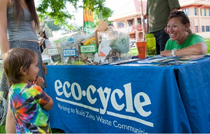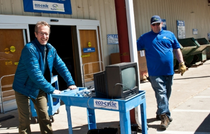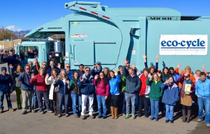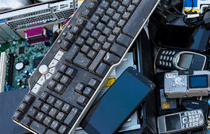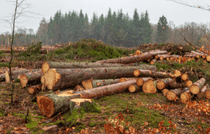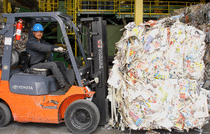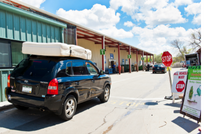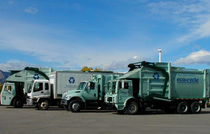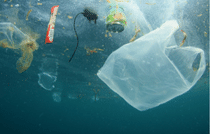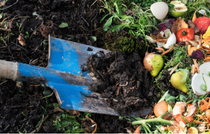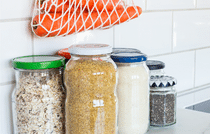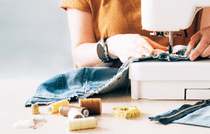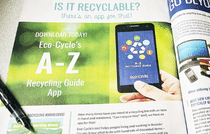Recycling Myths Debunked
Don’t let these recycling myths spook you! Find out the truth to these common recycling misconceptions.

MYTH: “What we put in recycling bins just gets thrown in the landfill, so we shouldn’t even bother!”
This myth grew in popularity a couple years ago when China stopped importing recyclables from the United States. Some recycling programs that heavily relied on sending materials to China were negatively impacted, but most recycling programs adapted and are sending your recyclables to end markets—the buyers of our recyclable materials. In Boulder County, Eco-Cycle operates the Boulder County Recycling Center, where we sort, bale, and send about 50,000 tons of aluminum, paper, glass, and other recyclables to end markets each year to be turned into new products! Recycling is a multi-billion-dollar industry in the US and an essential part of our economy, so keep on recycling!

The Boulder County Recycling Center processes over 50,000 tons of recyclable materials annually.
MYTH: “If you’re not sure if something is recyclable, throw it in your bin anyway, and an employee at the recycling facility will take it out if it’s not recyclable.”
Most recycling facilities have both mechanical sorting equipment as well as human hand-sorters, and their main task is to separate recyclables according to their material type—cardboard, aluminum, glass, etc.—so the materials can be baled and sent to end markets to be turned into new products. When sorters also have to pull out non-recyclable materials, it significantly reduces the efficiency of the system. On top of that, the sheer volume of materials being processed makes it impossible to catch every contaminant going by on the conveyor belts. For example, at the Boulder County Recycling Center, our machines and workers sort through almost 1,000 tons (or 2 million pounds) of materials each week!
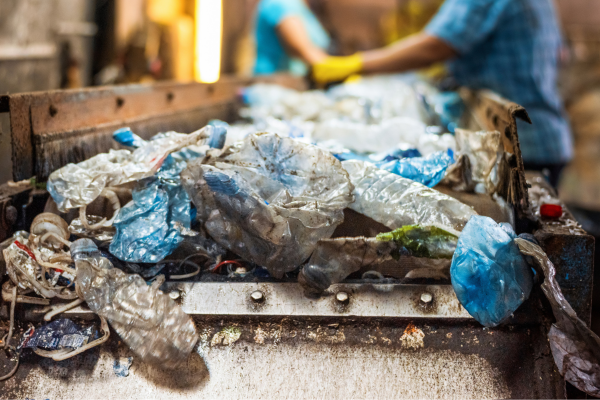
Plastic bags put into curbside recycling bins end up jamming recycling equipment, sometimes requiring a complete stoppage for removal.
Estimates from The Recycling Partnership suggest that 16.9% of what is put in recycling bins across the nation is not actually recyclable by the local facility—things like plastic bags, diapers, and plastic-coated papers. These non-recyclable materials are sorted out as best as possible by machinery and workers at the recycling facility and then landfilled, adding expenses to the program. Some contaminants slow the process down. For example, plastic bags jam up the machinery and often require a temporary but costly shutdown of machinery. Some contaminants present health and safety risks for workers—like food, which goes moldy. Help keep your local recycling program safe for employees—and financially viable—by carefully following your community’s recycling guidelines.
View recycling guidelines for Boulder County here.
MYTH: “If an item has the ‘chasing arrows’ recycling symbol on it, it means it’s recyclable.”
It’s understandable that the “chasing arrows” symbol on nearly every plastic product in distribution is often misinterpreted as meaning that the item is recyclable. Unfortunately, plastic manufacturing companies can put the “chasing arrows” recycling symbol on their products regardless of whether or not it is actually recyclable.
The recycling symbol on the bottom of a plastic item doesn’t indicate the recyclability of the item, it is a code for the TYPE of resin used. For example, a #1 inside the arrows represents the plastic resin polyethylene terephthalate (or “PETE”), often used to make plastic beverage bottles. A #6 inside the arrows represents the plastic resin polystyrene (or “PS”), often used to make foam take-out food containers and cups.
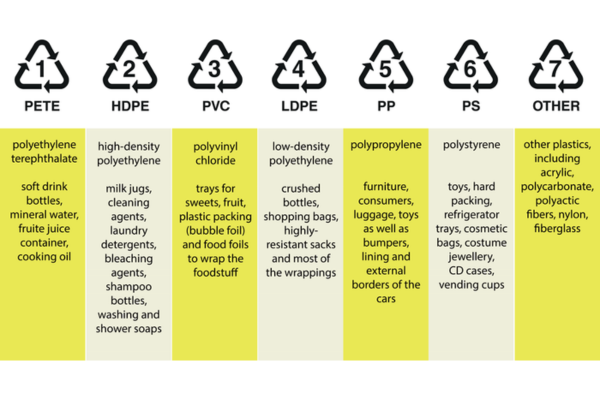
The “chasing arrows” symbol on plastics doesn’t indicate that the item is recyclable; it is a symbol used by the plastics industry to indicate the type of plastic resin used.
There is pressure on the plastics industry to change their misleading coding system. In the meantime, it’s important to know that recycling guidelines vary from place to place because recycling infrastructure and markets are different from community to community—so products cannot really be labeled as recyclable. What’s recyclable in your town may not be recyclable in another! Again, the best way to be in the know is to look at your community’s recycling guidelines.
MYTH: “Recycling uses more energy than it saves.”
According to the US Environmental Protection Agency, the energy savings of recycling are clear. Recycling aluminum cans saves 95% of the energy needed to make new cans from raw materials. Recycling steel and tin cans saves 60 to 74%; recycling paper saves about 60%; and recycling plastic and glass saves about one-third of the energy compared to making those products from virgin natural resources like trees, minerals, and fossil fuels.

